Portfolio
by Michael Flicek
During the spring and early summer of 2008, in the four China’s cities that I visited, it was apparent that a rapid transition was underway. Scores of modern, high rise living spaces had recently been built and scores more were under construction. Despite this, there remained many neighborhoods in the cities that appeared to have changed very little over the past many decades. These neighborhoods were often literally within the shadows of modern buildings and businesses that would not look out of place in most large cities in the United States. Much of the living in these older neighborhoods was taking place on the streets. People were using plastic tubs to wash everything from clothing, to food, to their hair, and their babies. Laundry was hanging to dry in the open city air. Noodles and buns were cooking on coal fired steel drum cookers from morning to evening. This cooked food was purchased by neighborhood residents and eaten in small garage like seating areas, on stoops, or while simply squatting along the streets or sidewalks. Open air markets were selling essentials for living that ranged from hardware to groceries. Often, the merchant’s venue was a small cloth spread out on the sidewalk. Vegatables and fruit were plentiful in these markets as were live fish, frogs, eels, and poulty. Butchered red meat was for sale on tables in the front of garage like openings throughout the heat of day. Flys were kept at bay with flyswatters.
In addition to products, services were also available on the streets and sidewalks. The service providers would stake out a small space on the sidewalk and set up shop. Shoes were repaired, keys were cut by locksmiths, and seamstresses were doing repair work. Playing cards, dominos, and mah jong on the streets and in the parks was a popular pasttime and, as often as not, a spectator sport.
Although differing in cultural context, the scenes in these China neighborhoods were reminiscent of neighborhood scenes from large American cities that were captured in photographs from early in the 20th century. Quite simply, there was a lot more life and living going on in the public places of these China neighborhoods than anything that I’ve witnessed in modern American Cities. For the improved standard of living that came with the widespread availability of air conditioners and televisions in America, something was certainly gained. However, something was also lost when Americans left behind the active street life and the front porch culture as they retreated into their private indoor living spaces. I could not help but wonder what will happen to the people that I photographed living in the older neighborhoods of China’s cities as modern buildings replace their existing structures and, along with them, a community and a long standing way of life.
Michael Flicek
2732 S. Poplar Street
Casper, WY 82601
Tel. 307 259.3963
www.michaelflicekgallery.com
mflicek@michaelflicekgallery.com
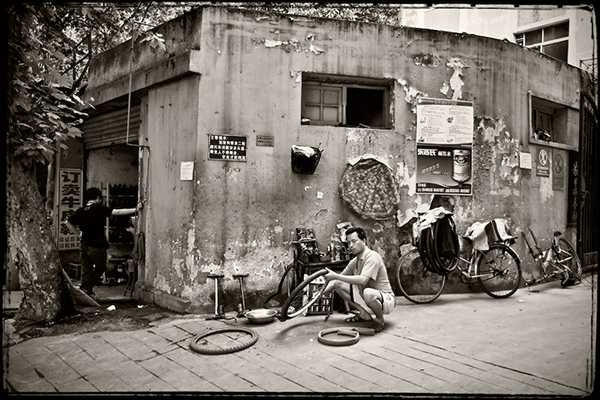
Bike Repairs
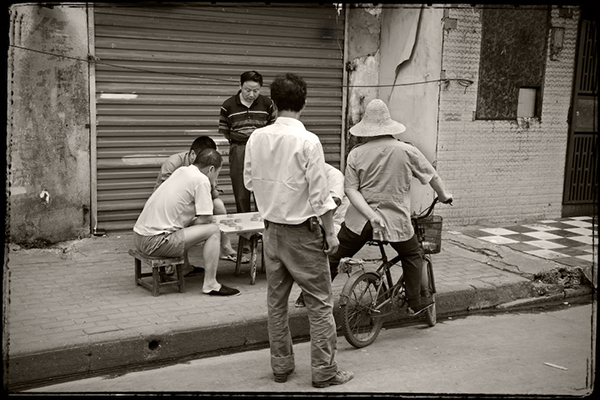
Calling Next Move
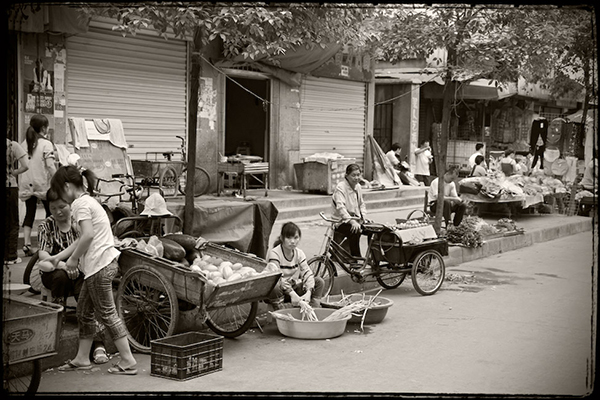
Cleaning Lotus Roots
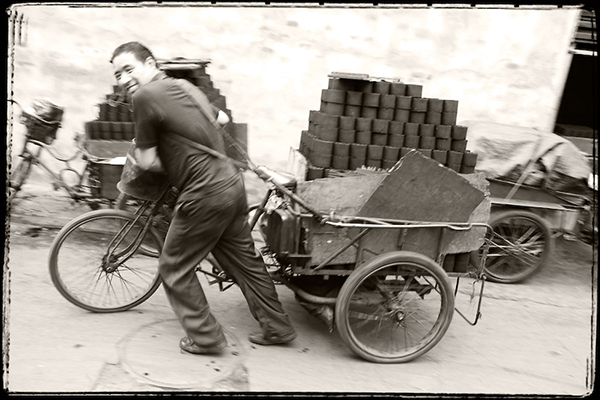
Coal Deliveryman
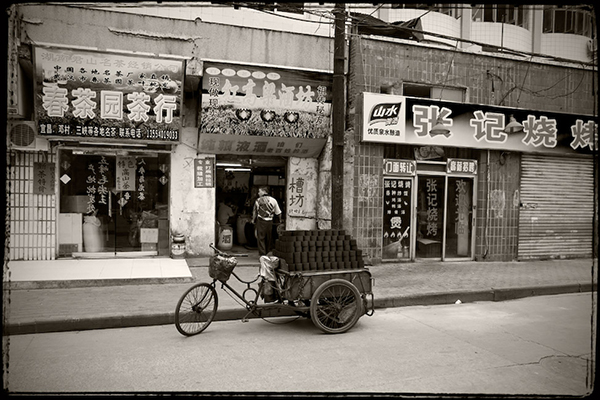
Coal Delivery
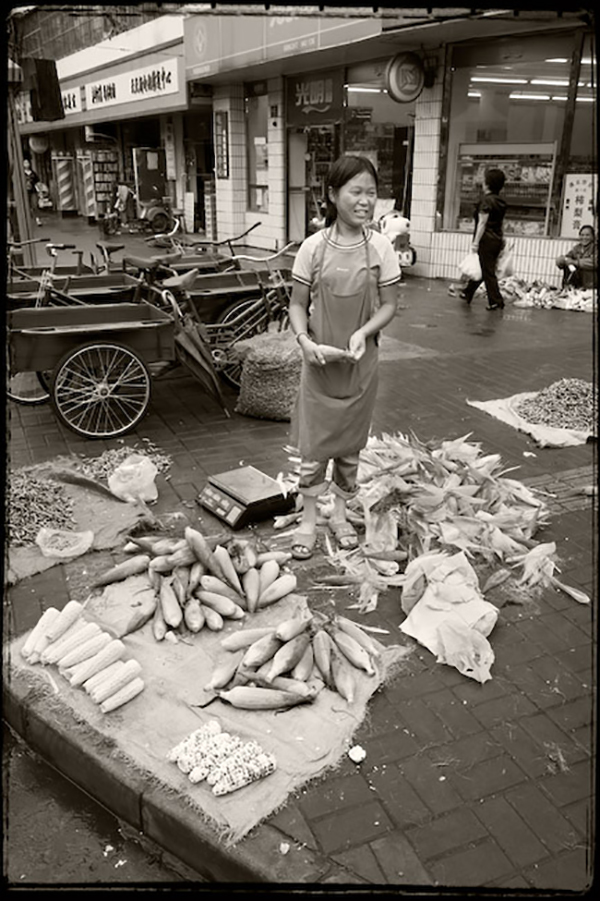
Corn Seller
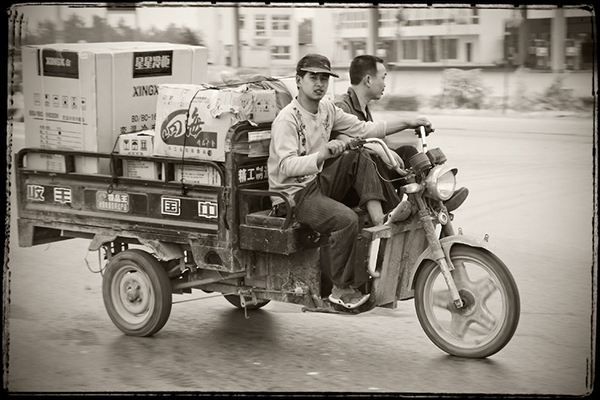
Delivery Underway
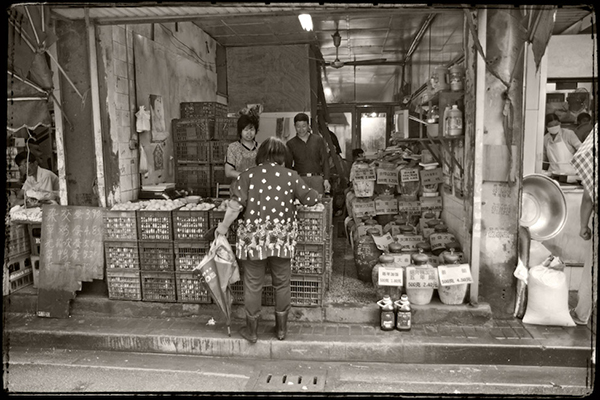
Egg Sales
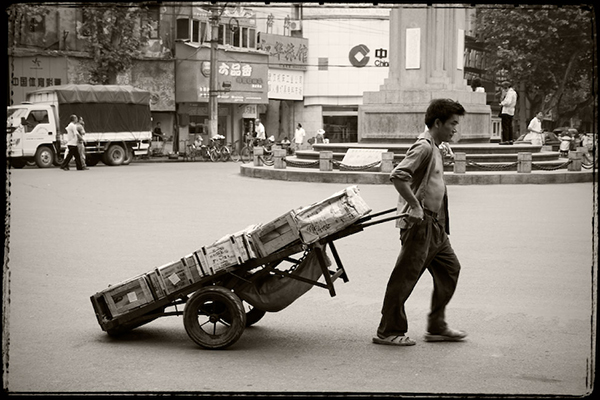
Handcart Delivery
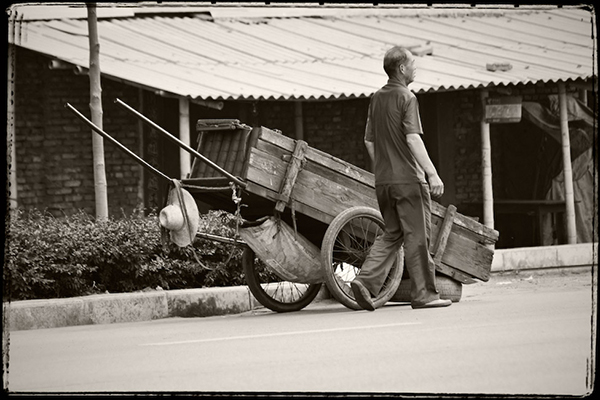
Handcart Operator
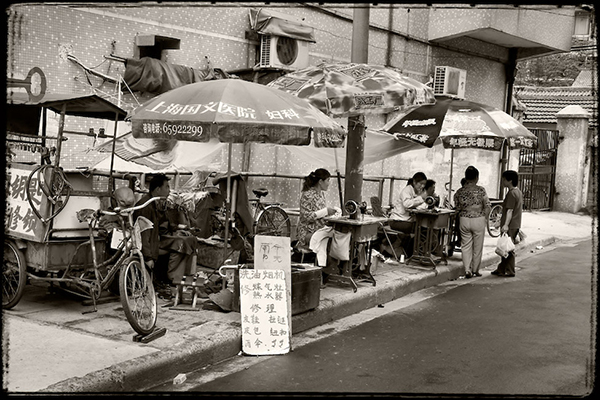
Locksmith and Seamstresses
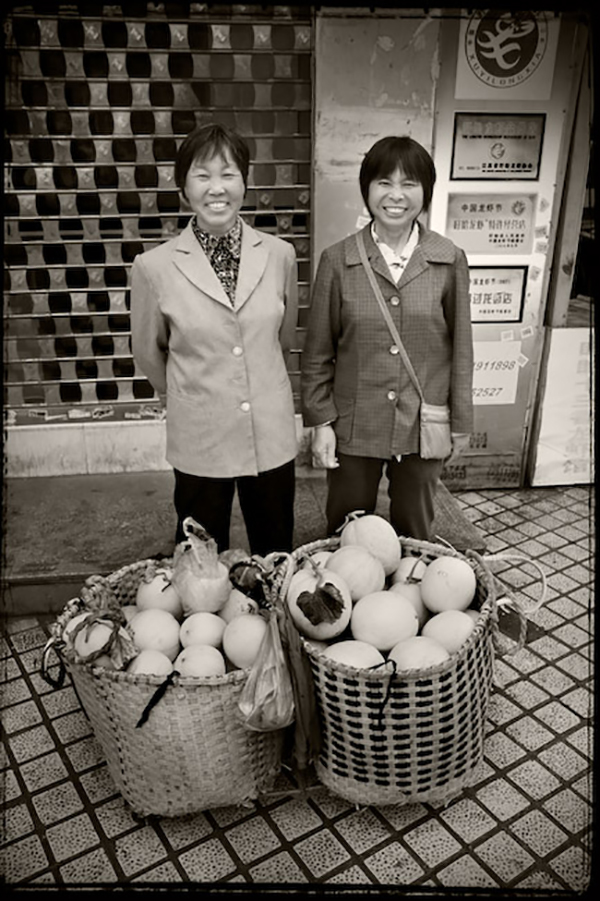
Mellon Sellers
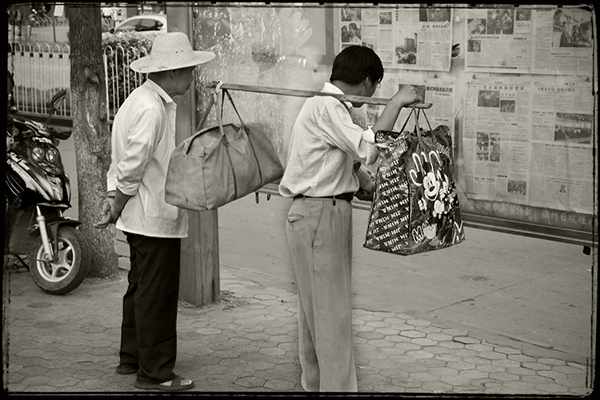
Micky Mouse and Daily News
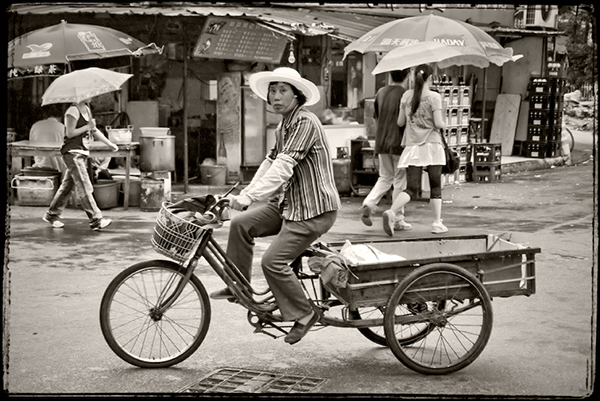
Morning Commute
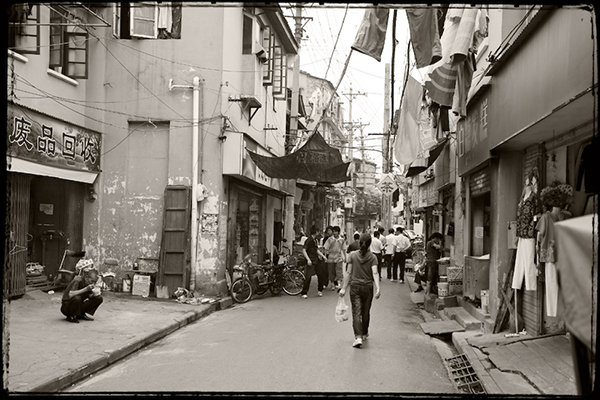
Noodle Meal
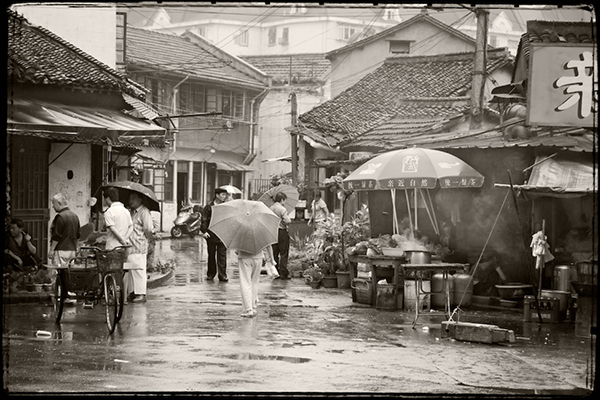
Noodles Cooking
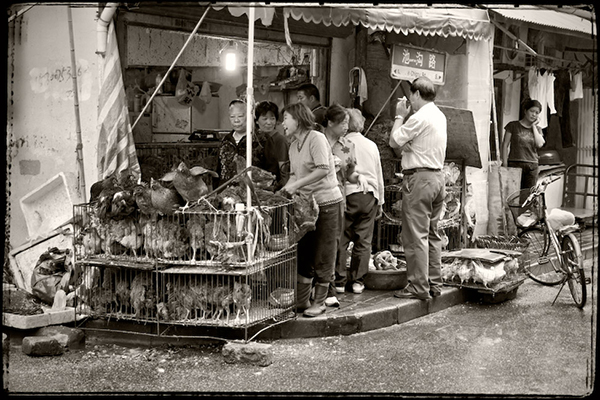
Poultry Sales
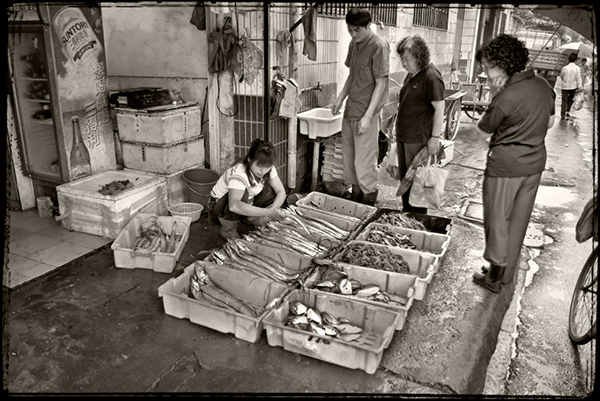
Seafood Sales
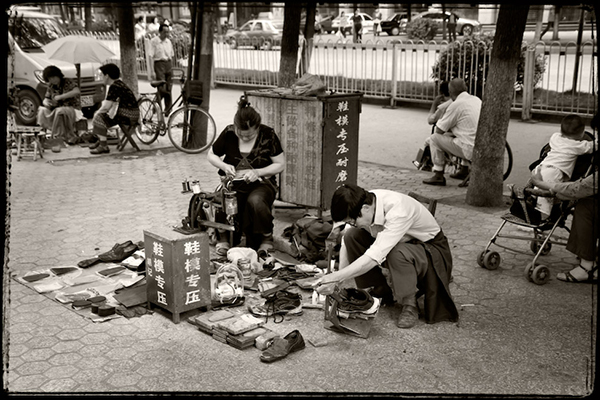
Shoe Repairs
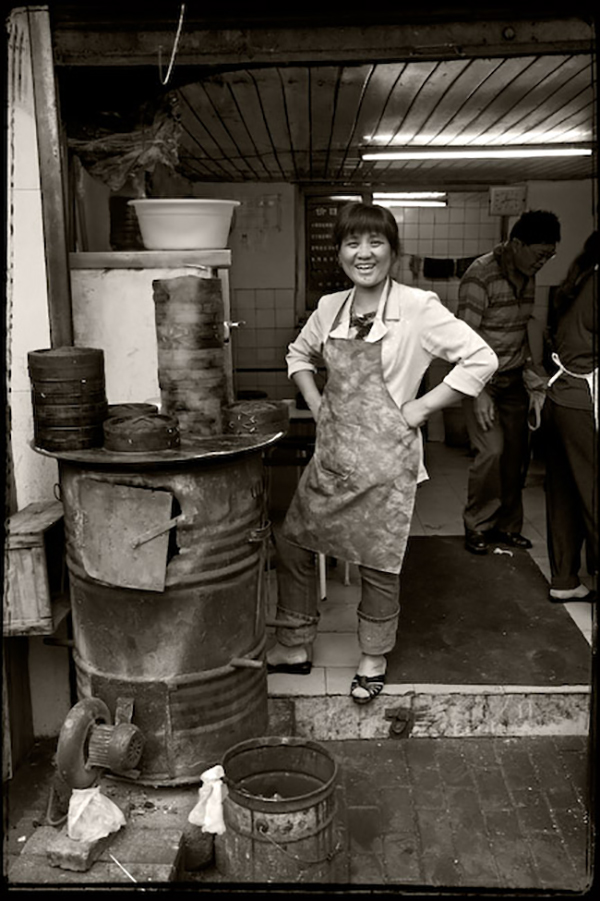
Streetside Cook
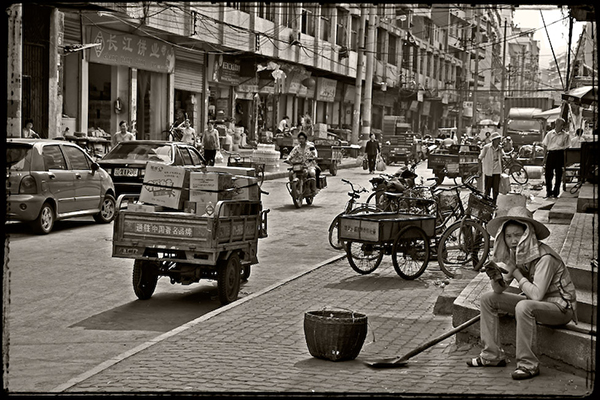
Tired City Worker
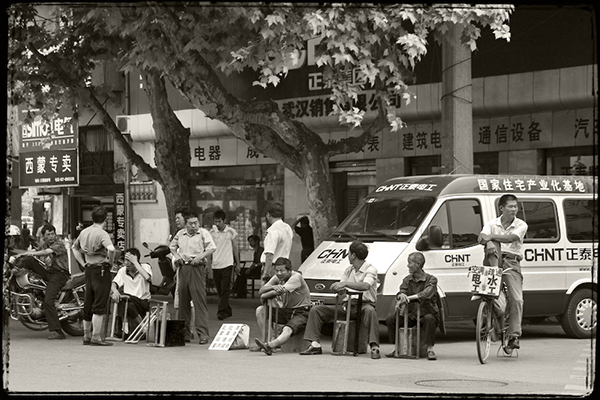
Waiting for Work
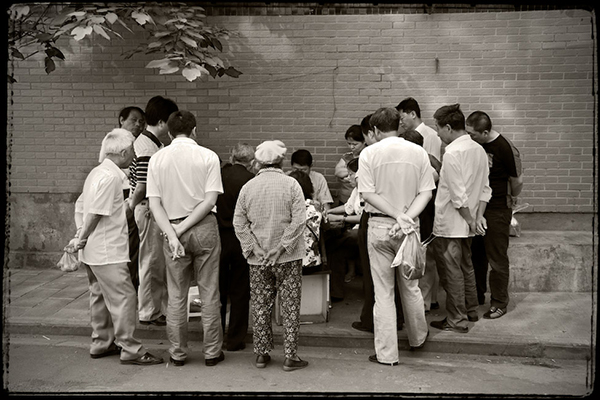
Watching a Game 1
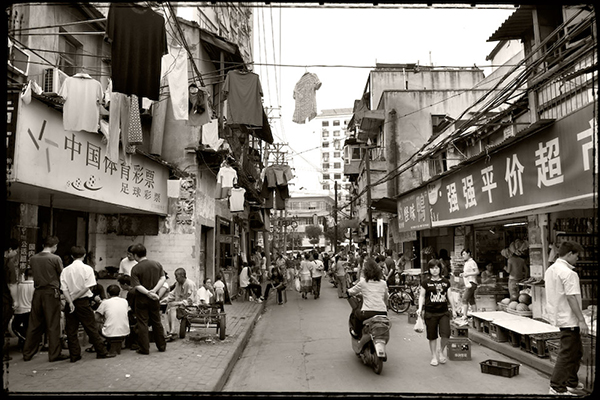
Watching a Game 2


